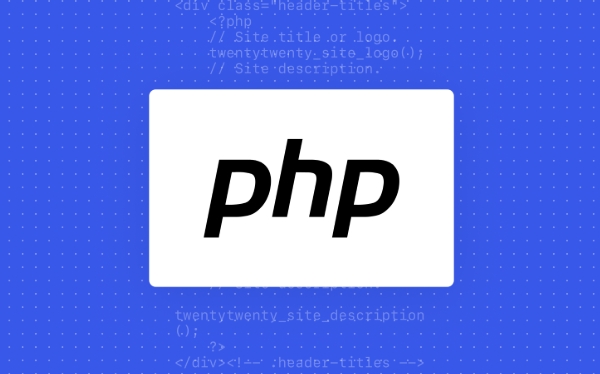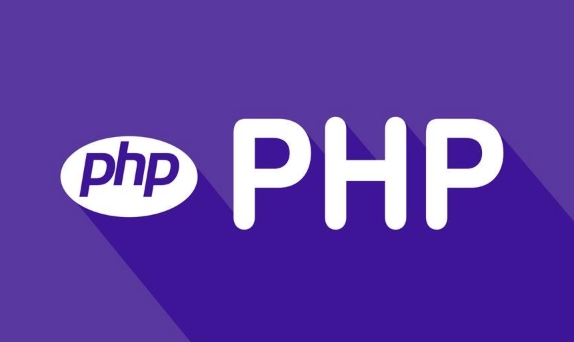 Backend Development
Backend Development
 PHP Tutorial
PHP Tutorial
 Juggling PHP Versions: Managing Multiple Environments with a Single Server
Juggling PHP Versions: Managing Multiple Environments with a Single Server
Juggling PHP Versions: Managing Multiple Environments with a Single Server
Jul 24, 2025 pm 07:55 PMYes, multiple PHP versions can be run on a single server, which can be implemented in conjunction with Nginx or Apache through PHP-FPM; 1. Install multiple PHP versions of FPM packages (such as php7.4-fpm, php8.3-fpm); 2. Ensure that each FPM service is running normally; 3. Configure server blocks for different sites in Nginx, point to the corresponding PHP-FPM socket through fastcgi_pass; 4. If using Apache, enable mod_proxy_fcgi module and specify FPM sockets through SetHandler in the virtual host; 5. You can switch the default version of CLI through update-alternatives or directly call a specific version; 6. Note that each PHP version needs to install extensions independently, manage OPcache, log files and security updates; this method can effectively and securely realize the coexistence of multiple PHP versions without containers, and is suitable for production environments.

Running multiple PHP versions on a single server isn't just possible—it's common. Whether you're maintaining legacy apps that require PHP 7.4 while developing new projects on PHP 8.3, or hosting multiple clients with different needs, managing multiple PHP environments efficiently is key. Here's how to do it smoothly without spinning up extra servers or containers.

Why Run Multiple PHP Versions?
Not all applications evolve at the same pace. A WordPress site might still depend on an old plugin incompatible with PHP 8, while your Laravel API uses the latest features from PHP 8.2 . Instead of forcing upgrades (which can break things), you can serve different sites with different PHP versions—on the same machine.
The good news? Modern web servers and PHP handlers make this manageable.

Use PHP-FPM with Nginx (or Apache)
The most flexible and widely used approach is pairing Nginx (or Apache) with PHP-FPM (FastCGI Process Manager). Each PHP version runs its own FPM pool, and your web server routes requests to the appropriate one based on the site.
Step-by-step setup (Ubuntu/Debian):
-
Install multiple PHP versions

sudo apt install php7.4-fpm php8.0-fpm php8.1-fpm php8.2-fpm php8.3-fpm
Each installs its own FPM service:
php7.4-fpm,php8.3-fpm, etc. Check FPM services
sudo systemctl status php7.4-fpm sudo systemctl status php8.3-fpm
They can all run simultaneously without conflict.
Configure Nginx server blocks
For a site needing PHP 7.4:
server { listen 80; server_name site-old.com; root /var/www/old-site; index index.php; location ~ \.php$ { include snippets/fastcgi-php.conf; fastcgi_pass unix:/run/php/php7.4-fpm.sock; } }For a modern app on PHP 8.3:
server { listen 80; server_name site-new.com; root /var/www/new-app; index index.php; location ~ \.php$ { include snippets/fastcgi-php.conf; fastcgi_pass unix:/run/php/php8.3-fpm.sock; } }Reload Nginx
sudo nginx -t && sudo systemctl reload nginx
Each site now runs on its designed PHP version—no interference.
Managing Apache? Use mod_proxy_fcgi
If you're on Apache, mod_proxy_fcgi lets you proxy PHP requests to different FPM sockets.
Enable required modules:
sudo a2enmod proxy_fcgi
Then in your virtual host:
<VirtualHost *:80>
ServerName legacy-site.com
DocumentRoot /var/www/legacy
<FilesMatch \.php$>
SetHandler "proxy:unix:/run/php/php7.4-fpm.sock|fcgi://localhost"
</FilesMatch>
</VirtualHost> Same principle: route .php files to the right FPM socket.
Switch CLI Version (Optional)
The system can only have one default php command. But you can switch it easily:
sudo update-alternatives --config php
This lets you pick which version runs when you type php in the terminal. Useful for Composer or artisan commands.
Alternatively, call specific versions directly:
php8.3 artisan migrate php7.4 composer install
Bonus: Tools to Simplify Management
- phpbrew – Great for developers testing versions locally, less ideal for production.
- Docker – Ultimate isolation, but adds complexity. Overkill if you just need version-per-site.
- Plesk/cPanel – Some hosting control panels support multi-PHP out of the box.
But for most production servers, native PHP-FPM Nginx/Apache is lightweight and reliable.
Watch Out for These Gotchas
- Extensions must be installed per version :
mysqlion PHP 8.3 doesn't mean it's on 7.4. Install them separately. - OPcache is per-FPM pool : Each version has its own cache. Clear carefully.
- Log files are separate : Check
/var/log/php7.4-fpm.logvs/var/log/php8.3-fpm.log. - Security updates : Don't forget older versions. Even if it's legacy, patch it.
Basically, you're not stuck with one PHP version per server. With PHP-FPM and a smart web server config, you can juggle versions like a pro-safely, efficiently, and without containers. It's not flashy, but it works.
The above is the detailed content of Juggling PHP Versions: Managing Multiple Environments with a Single Server. For more information, please follow other related articles on the PHP Chinese website!

Hot AI Tools

Undress AI Tool
Undress images for free

Undresser.AI Undress
AI-powered app for creating realistic nude photos

AI Clothes Remover
Online AI tool for removing clothes from photos.

Clothoff.io
AI clothes remover

Video Face Swap
Swap faces in any video effortlessly with our completely free AI face swap tool!

Hot Article

Hot Tools

Notepad++7.3.1
Easy-to-use and free code editor

SublimeText3 Chinese version
Chinese version, very easy to use

Zend Studio 13.0.1
Powerful PHP integrated development environment

Dreamweaver CS6
Visual web development tools

SublimeText3 Mac version
God-level code editing software (SublimeText3)

Hot Topics
 Mastering PHP-FPM and Nginx: A High-Performance Setup Guide
Jul 25, 2025 am 05:48 AM
Mastering PHP-FPM and Nginx: A High-Performance Setup Guide
Jul 25, 2025 am 05:48 AM
NginxhandlesstaticfilesandroutesdynamicrequeststoPHP-FPM,whichprocessesPHPscriptsviaFastCGI;2.OptimizePHP-FPMbyusingUnixsockets,settingpm=dynamicwithappropriatemax_children,spareservers,andmax_requeststobalanceperformanceandmemory;3.ConfigureNginxwit
 Setting Up PHP on macOS
Jul 17, 2025 am 04:15 AM
Setting Up PHP on macOS
Jul 17, 2025 am 04:15 AM
It is recommended to use Homebrew to install PHP, run /bin/bash-c"$(curl-fsSLhttps://raw.githubusercontent.com/Homebrew/install/HEAD/install.sh)" to install Homebrew, and then execute brewinstallphp or a specified version such as brewinstallphp@8.1; after installation, edit the php.ini file in the corresponding path to adjust memory_limit, upload_max_filesize, post_max_size and display_
 Harnessing the Power of WSL 2 for a Linux-Native PHP Development Workflow
Jul 26, 2025 am 09:40 AM
Harnessing the Power of WSL 2 for a Linux-Native PHP Development Workflow
Jul 26, 2025 am 09:40 AM
WSL2isthenewstandardforseriousPHPdevelopmentonWindows.1.InstallWSL2withUbuntuusingwsl--install,thenupdatewithsudoaptupdate&&sudoaptupgrade-y,keepingprojectsintheLinuxfilesystemforoptimalperformance.2.InstallPHP8.3andComposerviaOnd?ejSury’sPPA
 Demystifying PHP Compilation: Building a Custom PHP from Source for Optimal Performance
Jul 25, 2025 am 06:59 AM
Demystifying PHP Compilation: Building a Custom PHP from Source for Optimal Performance
Jul 25, 2025 am 06:59 AM
CompilingPHPfromsourceisnotnecessaryformostprojectsbutprovidesfullcontrolforpeakperformance,minimalbloat,andspecificoptimizations.2.ItinvolvesconvertingPHP’sCsourcecodeintoexecutables,allowingcustomizationlikestrippingunusedextensions,enablingCPU-spe
 Deploying a Scalable PHP Environment on AWS EC2 from Scratch
Jul 26, 2025 am 09:52 AM
Deploying a Scalable PHP Environment on AWS EC2 from Scratch
Jul 26, 2025 am 09:52 AM
LaunchanEC2instancewithAmazonLinux,appropriateinstancetype,securesecuritygroup,andkeypair.2.InstallLAMPstackbyupdatingpackages,installingApache,MariaDB,PHP,startingservices,securingMySQL,andtestingPHP.3.DecouplecomponentsbymovingdatabasetoRDS,storing
 Unlocking Peak PHP Performance: Configuring OPcache and JIT Compilation
Jul 24, 2025 pm 09:58 PM
Unlocking Peak PHP Performance: Configuring OPcache and JIT Compilation
Jul 24, 2025 pm 09:58 PM
OPcache and JIT are the core tools for PHP8.0 performance optimization. Correct configuration can significantly improve execution efficiency; 1. Enable OPcache and set opcache.enable=1, opcache.memory_consumption=192, opcache.max_accelerated_files=20000, opcache.validate_timestamps=0 to implement opcode caching and reduce parsing overhead; 2. Configure JIT to enable tracking JIT through opcache.jit_buffer_size=256M and opcache.jit=1254
 Automating Your PHP Environment Setup: Integrating PHP into a CI/CD Pipeline
Jul 26, 2025 am 09:53 AM
Automating Your PHP Environment Setup: Integrating PHP into a CI/CD Pipeline
Jul 26, 2025 am 09:53 AM
ChooseaCI/CDplatformlikeGitHubActionsorGitLabCIfortightversioncontrolintegrationandminimalinfrastructure;2.DefineaconsistentPHPenvironmentusingcontainerizationwithimageslikephp:8.2-cliorcomposer:latestandinstalldependenciesviacomposerinstall--no-inte
 Troubleshooting Common PHP Installation Pitfalls: A Diagnostic Checklist
Jul 26, 2025 am 09:50 AM
Troubleshooting Common PHP Installation Pitfalls: A Diagnostic Checklist
Jul 26, 2025 am 09:50 AM
VerifysystemrequirementsanddependenciesbyconfirmingOScompatibilityandinstallingessentiallibrariesandbuildtools,usingpackagemanagerslikeaptoryumtosimplifydependencymanagement.2.CheckPHPconfigurationandcompilationerrorsbyrunningaminimal./configurecomma






